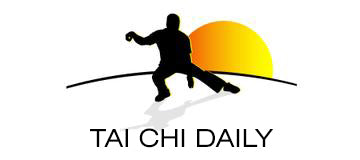TAI CHI TERMS AND DEFINITIONS

"The teacher however, can only lead the student to the correct gate, he cannot compel him to go further, Somewhere inside the gates masses gold and diamonds lie hidden. It is up to the student to go beyond the door and into the inner rooms to search for the treasure."
― Master T.T. Liang "Tai Chi Chuan for Health and Self Defense"
A list of the Most Commonly Used Tai Chi Terms and Definitions
As the above quote by Tai Chi Master T.T. Liang suggests, it is up to the student to open the door and go beyond what their teacher says in their Tai Chi class.
Below is a list of Tai Chi Terms, definitions, and meanings to help you to understand some of the more common terms used in a Tai Chi or Qigong class. Learning some of the commonly used Tai Chi terms and definitions will increase your understanding of Tai Chi Chuan.
Other spellings of Tai Chi may include: t'ai-chi, tai ji, taiji, taijiquan, t'ai chi ch'uan
tai-chi Chuan.
An: Push. A technique for pushing or striking an opponent.4
Baihui: An acupuncture cavity on top of the head.2
Ba Duan Jin: Eight Pieces of Brocade.
Bubbling Well: The center of the foot where the root lies.3
Chai: Pluck. A technique for unbalancing the opponent or pulling him into an exposed position.4
Chi: An intrinsic energy which circulates in all living things.
Chin Na: Joint Lock.
Chi Kung: A type of Kung Fu training which specializes in building up the Chi circulation in the body for health and/or martial purposes.4
Chou: Elbow Stroke.
Dao: The way.
Dantien: The storage depot of qi that is located about two inches beneath the navel.1
Eight Gates: Peng, Lu, Ji, An, T'sai, Lieh, K'ao, Chou.
Fa Chin: To release the internal force (chin).3
Gou: Hook hand.2
Grasp the Sparrow's Tail: A series of four postures (Wardoff, Rollback, Press, Push).3
Ha: Sound emitted during practice.2
Heng: Sound emitted during practice.2
Huantiao: An acupuncture cavity located on the buttocks.2
Huiyin: An acupuncture cavity located on the perineum.2
I: Mind.3
Jin: Martial arts power.2
Jing: Power; flow of energy.4
Kau: Shoulder-Stroke. A technique of using the shoulder to strike or throw the opponent.4
Kua - Hip socket.
Laogong: An acupuncture cavity located on the palm.2
Li: Muscular Power, strength.4
Lieh: Split.
Lu: Rollback. A technique for leading an opponent's attack past you.4
Mingmen: An acupuncture cavity located on the back, near the 14th vertebra.2
Mushin: No mind.
Nei Dan: Internal.
Peng: Ward—off. A technique for bouncing the opponent's force back in the direction it came from.4
Nei Kung (Nei Gung) - Internal work.
Qi: The internal energy that circulates around specific pathways in the body, identified in Chinese medicine as meridians.1
Qi Gong: A type of Kung Fu training which specializes in building up the Chi
Qinna (Chin Na): Seize and control techniques.2
Quan: Fist.2
Sanjiao: Triple burner. The body is divided into three sections: the upper burner (lungs and heart), the middle burner (spleen, stomach, liver, and gallbladder), and the lower burner(spleen, stomach, liver, and gallbladder).
Shen: Spirit.3 The consciousness within which the mind and thought function.4
Seven Stars: Refers to the seven points of the body - head, shoulder, elbow, hand, hip, knee, and foot.
Shen: Spirit.
Sung: (pronounced soong) means to completely relax mentally and physically; releasing any tension in the mind and body.
Taiji (Tai Chi): Grand Ultimate.2
Tai Chi Chuan: Grand Ultimate Fist. (pronounced Tie Jee Chuan).4.
Ti Fang: Uproot
Yi: Mind (focused attention).
Yang: Positive, male.
Yin: Negative, female.
Yin and Yang: The traditional Chinese philosophical concepts of opposites that conceptually define and seek balance in all endeavors.1
Yongquan: An acupuncture cavity on the bottom of the foot.2
Chan Szu Jing: (Silk Reeling): The movement and path of internal energy, expressed in a coiling nature of the body.1
Wei Gong - External work.
World Tai Chi and Qigong Day: an annual event held the last Saturday of April each year to promote Tai chi Chuan and Qigong.
Wai Dan: External.
Wushu: Chinese martial arts.2
Wuji: The beginning of the Dao (Tao). or the cosmo; the undifferentiated beginning.2
Wu Chi: Literally no extremity. This is the state of undifferentiated emptiness before beginning. As soon as there is a beginning or movement, there is differentiation and opposites, and this is called Tai Chi.4
Zou: Elbow strike. The technique for striking with the elbow.4
Zhan Zhuang: Standing post training
Zhang, San Feng: Well-known Daoist Qigong and martial arts master credited as the creator of Tai Chi Chuan.
Zhong Ding: Central equilibrium
- Taijiquan, Chen Taiji 38 form and applications. Ren Guang Yi.
- Tai Chi Chuan 24 & 48 Postures With Martial Applications, Master Liang, Shou-Yu and Wu, Wen-Ching.
- Cheng Tzu's Thirteen Treatises on T'ai Chi Ch'uan, Cheng Man Ching.
- Advanced Yang Style Tai Chi Chuan, Volume 1, Dr. Yang Jwing-Ming.
